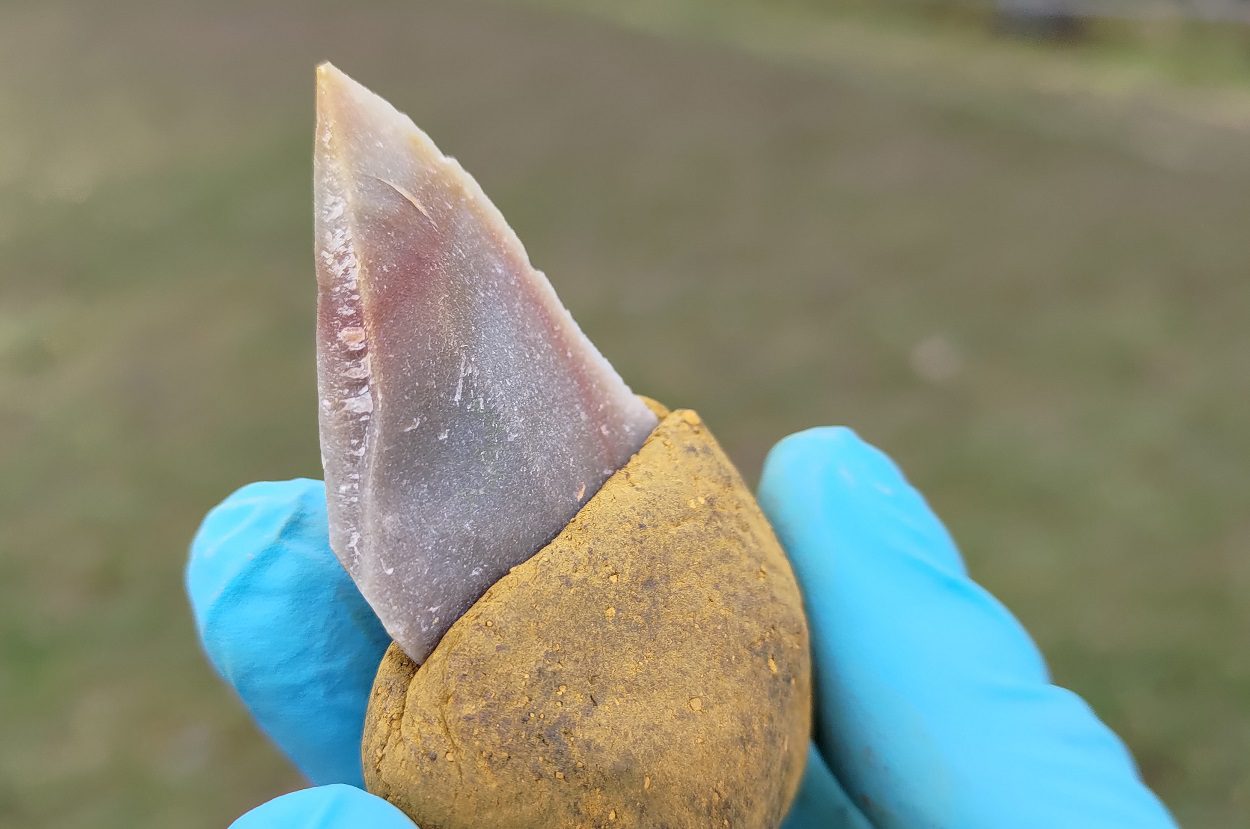A new study published in the journal Science Advances has found evidence of Neanderthals creating stone tools that are held together using a multi-component adhesive.
According to the study authors, the findings present the earliest evidence of a complex adhesive in Europe and demonstrate that Neanderthals had a higher level of cognition and cultural development than previously thought.
Radu Iovita, an associate professor at New York University’s Centre for the Study of Human Origins, said: “These astonishingly well-preserved tools showcase a technical solution broadly similar to examples of tools made by early modern humans in Africa, but the exact recipe reflects a Neanderthal ‘spin,’ which is the production of grips for handheld tools.”
The study, led by Patrick Schmidt from the University of Tübingen’s Early Prehistory and Quaternary Ecology section and Ewa Dutkiewicz from the Museum of Prehistory and Early History at the National Museums in Berlin, conducted an examination of objects found at Le Moustier, an archaeological site consisting of two rock shelters in Peyzac-le-Moustier, a village in the Dordogne, France.
The examined tools date from between 120,000 and 40,000 years ago during the Middle Palaeolithic period, which were left individually wrapped and untouched since their discovery in the 1960’s.
The study found traces of a mixture of ochre and bitumen on several stone tools, a naturally occurring earth pigment. “We were surprised that the ochre content was more than 50 percent,” says Schmidt. “This is because air-dried bitumen can be used unaltered as an adhesive, but loses its adhesive properties when such large proportions of ochre are added.”
Using tensile tests to determine the strength, the researchers found that liquid bitumen is not a suitable material for gluing, however, when applying 55% ochre, a malleable mass is formed. This mixture possessed just enough stickiness to hold a stone tool in place, rendering it an appropriate material for a handle.
In fact, a microscopic examination of the use-wear traces on these stone tools revealed that the adhesives on the tools from Le Moustier were used in this way.
“The tools showed two kinds of microscopic wear: one is the typical polish on the sharp edges that is generally caused by working other materials,” explains Iovita, who conducted this analysis. “The other is a bright polish distributed all over the presumed hand-held part, but not elsewhere, which we interpreted as the results of abrasion from the ochre due to movement of the tool within the grip,” added Iovita.
Header Image Credit : Patrick Schmidt
Sources : New York University – Ochre-based compound adhesives at the Mousterian type-site document complex cognition and high investment. https://doi.org/10.1126/sciadv.adl0822







